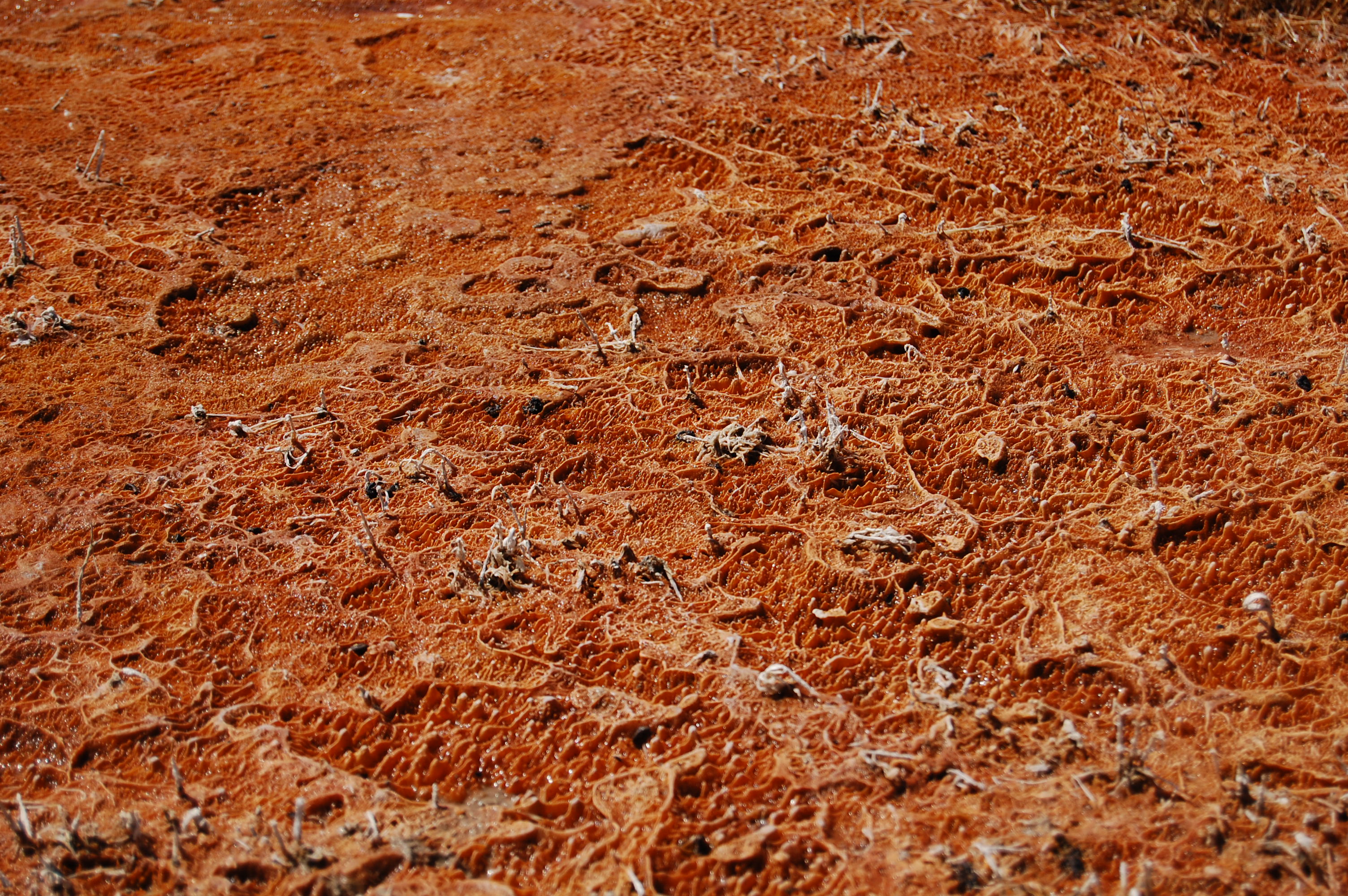|
Acidimicrobium
''Acidimicrobium ferrooxidans'' is a bacterium, the type species of its genus. It is a ferrous-iron-oxidizing, moderately thermophilic and acidophilic bacterium. References Further reading *Clum, Alicia, et al. "Complete genome sequence of Acidimicrobium ferrooxidans type strain (ICPT)." Standards in Genomic Sciences 1.1 (2009): 38. * *Whitman, William B., et al., eds. Bergey's manual® of systematic bacteriology. Vol. 5. Springer, 2012. * External links *LPSN Actinomycetota [...More Info...] [...Related Items...] OR: [Wikipedia] [Google] [Baidu] |
Ferrous
In chemistry, the adjective Ferrous indicates a compound that contains iron(II), meaning iron in its +2 oxidation state, possibly as the divalent cation Fe2+. It is opposed to "ferric" or iron(III), meaning iron in its +3 oxidation state, such as the trivalent cation Fe3+.ferrous entry in the online dictionary. Accessed on 2008-04-19. This usage has been largely replaced by the nomenclature, which calls for the oxidation state being indicated by Roman numerals in parentheses, such as |
Thermophilic
A thermophile is an organism—a type of extremophile—that thrives at relatively high temperatures, between . Many thermophiles are archaea, though they can be bacteria or fungi. Thermophilic eubacteria are suggested to have been among the earliest bacteria. Thermophiles are found in various geothermally heated regions of the Earth, such as hot springs like those in Yellowstone National Park (see image) and deep sea hydrothermal vents, as well as decaying plant matter, such as peat bogs and compost. Thermophiles can survive at high temperatures, whereas other bacteria or archaea would be damaged and sometimes killed if exposed to the same temperatures. The enzymes in thermophiles function at high temperatures. Some of these enzymes are used in molecular biology, for example the ''Taq'' polymerase used in PCR. "Thermophile" is derived from the el, θερμότητα (''thermotita''), meaning heat, and el, φίλια (''philia''), love. Classification Thermophiles can be ... [...More Info...] [...Related Items...] OR: [Wikipedia] [Google] [Baidu] |
Acidophilic
Acidophiles or acidophilic organisms are those that thrive under highly acidic conditions (usually at pH 5.0 or below). These organisms can be found in different branches of the tree of life, including Archaea, Bacteria,Becker, A.Types of Bacteria Living in Acidic pH" Retrieved 10 May 2017. and Eukarya. Examples A list of these organisms includes: Archaea :* Sulfolobales, an order in the Thermoproteota branch of Archaea :* Thermoplasmatales, an order in the Euryarchaeota branch of Archaea :* ARMAN, in the Euryarchaeota branch of Archaea :* ''Acidianus brierleyi, A. infernus'', facultatively anaerobic thermoacidophilic archaebacteria :* ''Halarchaeum acidiphilum'', acidophilic member of the Halobacteriacaeae :* ''Metallosphaera sedula'', thermoacidophilic Bacteria :* Acidobacteriota, a phylum of Bacteria :* Acidithiobacillales, an order of Pseudomonadota e.g. ''A. ferrooxidans, A. thiooxidans'' :*'' Thiobacillus prosperus, T. acidophilus, T. organovorus, T. cuprinus'' :*'' ... [...More Info...] [...Related Items...] OR: [Wikipedia] [Google] [Baidu] |
Actinomycetota
The ''Actinomycetota'' (or ''Actinobacteria'') are a phylum of all gram-positive bacteria. They can be terrestrial or aquatic. They are of great economic importance to humans because agriculture and forests depend on their contributions to soil systems. In soil they help to decompose the organic matter of dead organisms so the molecules can be taken up anew by plants. While this role is also played by fungi, ''Actinomycetota'' are much smaller and likely do not occupy the same ecological niche. In this role the colonies often grow extensive mycelia, like a fungus would, and the name of an important order of the phylum, '' Actinomycetales'' (the actinomycetes), reflects that they were long believed to be fungi. Some soil actinomycetota (such as ''Frankia'') live symbiotically with the plants whose roots pervade the soil, fixing nitrogen for the plants in exchange for access to some of the plant's saccharides. Other species, such as many members of the genus ''Mycobacterium'', ... [...More Info...] [...Related Items...] OR: [Wikipedia] [Google] [Baidu] |
Bacteria Described In 1996
Bacteria (; singular: bacterium) are ubiquitous, mostly free-living organisms often consisting of one biological cell. They constitute a large domain of prokaryotic microorganisms. Typically a few micrometres in length, bacteria were among the first life forms to appear on Earth, and are present in most of its habitats. Bacteria inhabit soil, water, acidic hot springs, radioactive waste, and the deep biosphere of Earth's crust. Bacteria are vital in many stages of the nutrient cycle by recycling nutrients such as the fixation of nitrogen from the atmosphere. The nutrient cycle includes the decomposition of dead bodies; bacteria are responsible for the putrefaction stage in this process. In the biological communities surrounding hydrothermal vents and cold seeps, extremophile bacteria provide the nutrients needed to sustain life by converting dissolved compounds, such as hydrogen sulphide and methane, to energy. Bacteria also live in symbiotic and parasitic r ... [...More Info...] [...Related Items...] OR: [Wikipedia] [Google] [Baidu] |
_oxide.jpg)

